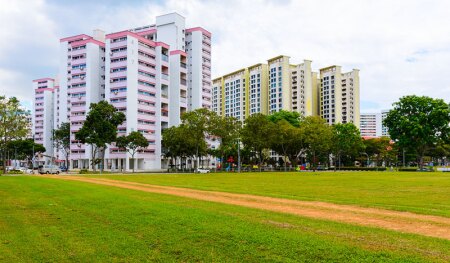Increasing attainable housing is one of ULI’s global mission priorities. ULI Asia Pacific has established the Asia Pacific Centre for Housing, with the launch of the first edition of the region’s Home Attainability Index to advance housing programs in the region. This milestone development took place at the region’s inaugural Housing Forum, which was part of the 2022 ULI Asia Pacific Summit in Hong Kong in August.
According to David Faulkner, president, ULI Asia Pacific, the Centre “will be key in providing practical and future-proof insights towards housing issues in the region. Through the Centre, we strive to facilitate constructive discussions around housing topics such as housing attainability and its fundamental drivers, rental housing models, emerging housing concepts and improving the affordability of home ownership.”
The 2022 ULI Asia Pacific Home Attainability Index analyzes home attainability, both for ownership and rent, in 28 cities in five countries in the Asia Pacific region including Australia, China, Japan, Singapore, and South Korea. These countries have a combined population of approximately 1.8 billion or 21 percent of the world’s population.
As determined by median private home price to median annual household income ratio, Shenzhen, China was deemed the least affordable at more than 40 times median incomes, followed by Hong Kong SAR with over 30 times, with Beijing and Shanghai following closely. According to Kenneth Rhee, the report author and ULI China Senior Director, Shenzhen had the smallest amount of new housing stock among major Chinese cities in the past decade relative to population increase. At the same time, Rhee noted that the city has a significant amount of informal housing, meaning homes without legal title, which are not included in the official private housing sector data and thus not included in the home attainability index. Estimated to represent around 30 percent of all housing stock, informal housing stock is primarily used by migrants and low-income households.
For private market rental housing, Hong Kong ranked highest in terms of monthly rent to monthly median income at over 50 percent, followed by Shenzhen, Beijing, and Shanghai at around 40 percent. When the size of typical rental units is considered, Hong Kong’s private market rental housing is the most expensive with an average monthly rent of US$43 per sqm of floor area, far outpacing US$24 for Singapore’s private market rental units that generally target upper middle income households including expatriates. The report also noted that approximately half of Hong Kong’s residents live in public housing units that are deeply subsidized. The average cost of Hong Kong’s public rental housing units is estimated to be below 10 percent of the renters’ median income.
According to the report, Singapore’s housing is deemed most affordable with the highest homeownership rate of around 90 percent and the mainstream HDB (Housing Development Board) units being priced at 4.5 times the city-state’s median annual household income, the lowest among the 28 cities in the report.
The report also highlighted the following trends and key factors affecting home attainability:
- A growing portion of high-density apartment units relative to single family homes in Australia’s three largest cities, Sydney, Melbourne, and Brisbane. Roughly half the size of single-family homes, apartment units are priced at around half the cost of single-family homes and thus significantly improve home attainability for low to middle income families
- In Tokyo and Seoul, a relatively large portion (over 40 percent) of the respective housing stock consists of single-family homes and low-density multi-family buildings
- In Hong Kong, the portion of land used for housing is limited to less than 4 percent, contributing to a substantially under-supplied housing stock
- Availability and costs of mortgage financing and transaction costs for home purchase such as transfer tax and brokerage fee vary widely among the countries and impact home attainability and flexibility of the housing market
In a panel discussion that followed the announcement of the report’s key findings, Professor Kwan Ok Lee of National University of Singapore commented that there has been limited home attainability analysis for different countries in the region and that the report provides a useful basis of evaluating home attainability across the region and analyzing key determinants.
Professor Chihiro Shimizu of Hitotsubashi University pointed out the importance of continuing this survey. He commented that Japan faced the home affordability problem 40 years ago and is now suffering from the problems of an aging population and a high vacancy rate in its housing stock. He argued that it is necessary to make comparisons based on the growth stage of each country’s economy, and for this reason it is important to conduct the survey on an ongoing basis.
KEN RHEE s senior director, ULI China, and CEO of Huhan Advisory.





